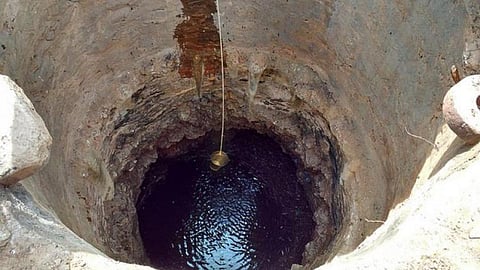
- Topics
- Feature
- Opportunities & Events
- Data
- Hindi Portal
- Topics
- Feature
- Opportunities & Events
- Data
- Hindi Portal

Groundwater in arid and semi arid regions continues to be a valuable and often the single most source of freshwater and conservation of this resource remains crucial for the survival of communities residing in the area. At the same time, a serious decline in the quality of groundwater is adding pressure on these water resources.
No where is this more obvious than in arid and semiarid regions of states such as Rajasthan in India where rapid urbanisation, industralisation, human induced anthropogenic activities, use of fertilisers, improper sewage disposal, human and animal waste are increasingly contributing to groundwater pollution, posing health risks to populations.
This paper titled 'Anthropogenic nitrate in groundwater and its health risks in the view of background concentration in a semi arid area of Rajasthan, India' published in Nature Scientific Reports presents the findings of a study that explores the extent of nitrate contamination of groundwater, a growing but unexplored problem in Rajasthan, where the only source of freshwater is groundwater.
The study aimed at assessing the natural and anthropogenic nitrate (NO3) concentrations in groundwater in semi arid areas of Rajasthan and the risks it posed to health among children and adult men and women.
Nitrate (NO3), is an end product of the biological nitrification process and is very commonly found in aquifers throughout the world. Recent evidence shows that nitrate concentrations in aquifers are increasing.
The distribution of nitrate in groundwater is influenced by a number of factors such as source availability, thickness and composition of the vadose zone, precipitation, irrigation, ground water flow, aquifer heterogeneity, dissolved oxygen concentrations and electron donor availability and dispersion. Nitrogen is commonly found in the natural water as ammonia (NH3), nitrite (NO2-), nitrate (NO3-), and the ammonium ion (NH4+).
Most of the groundwater samples with high nitrate concentrations are found to be associated with decaying plant or animal material, agricultural fertilisers, domestic sewage or geologic materials containing soluble nitrogen compounds.
Excessive nitrate buildup happens in shallow aquifers due to the downward leaching of nitrogen from surface water, while deep wells (>150 m) show little or no evidence of nitrate contamination.
In India, higher NO3 concentration in groundwater has been reported from different hydrogeological terrains and has been extensively studied in the Gangetic plains.
Consumption of drinking water contaminated with nitrogen can lead to methemoglobinemia in infants under 6 month of age. This disease is caused by the bacterial reduction of nitrate to nitrite in the intestinal tract. The nitrite then enters the blood-stream and combines with the haemoglobin to form methemoglobin, which reduces the blood's capacity to transport oxygen. Methemoglobinemia is also known as a 'blue baby syndrome'.
Severe methemoglobinemia can result in brain damage and death. Prolonged intake of high levels of nitrate is also linked to gastric problems and stomach cancer in extreme cases.
The World Health Organisation (WHO) has defined the maximum permissible nitrate level in drinking water as 50 mg/L. In the Indian context, the Bureau of Indian Standards (BIS) recommends 45 mg/L as the permissible level of NO3 in drinking water.
The nitrate health risk assessment found that about 38 percent, 46 percent, and 49 percent of the samples posed non-carcinogenic health risks to males, females, and children.
The study recommends: